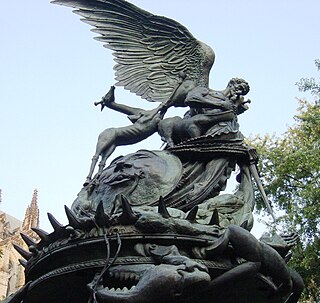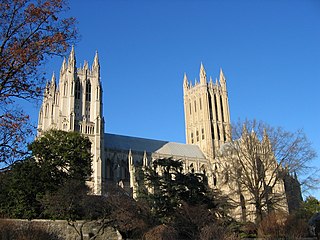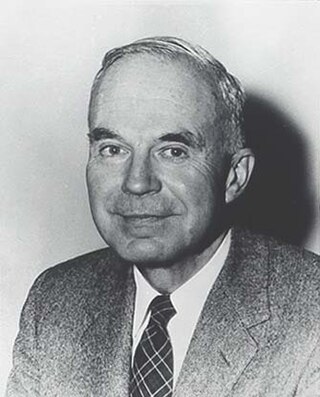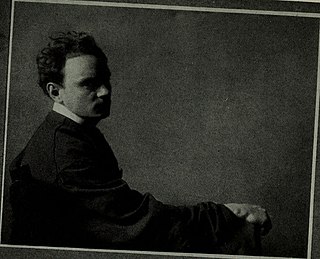Related Research Articles

Arthur Eric Rowton Gill was an English sculptor, letter cutter, typeface designer, and printmaker. Although the Oxford Dictionary of National Biography describes Gill as "the greatest artist-craftsman of the twentieth century: a letter-cutter and type designer of genius", he is also a figure of considerable controversy following the revelations of his sexual abuse of two of his daughters and of his pet dog.

Giambologna, also known as Jean de Boulogne (French), Jehan Boulongne (Flemish) and Giovanni da Bologna (Italian), was the last significant Italian Renaissance sculptor, with a large workshop producing large and small works in bronze and marble in a late Mannerist style.

Sir Joseph Edgar Boehm, 1st Baronet, was an Austrian-born British medallist and sculptor, best known for the "Jubilee head" of Queen Victoria on coinage, and the statue of the Duke of Wellington at Hyde Park Corner. During his career Boehm maintained a large studio in London and produced a significant volume of public works and private commissions. A speciality of Boehm's was the portrait bust; there are many examples of these in the National Portrait Gallery. He was often commissioned by the Royal Family and members of the aristocracy to make sculptures for their parks and gardens. His works were many, and he exhibited 123 of them at the Royal Academy from 1862 to his death in 1890.

The Longmen Grottoes or Longmen Caves are some of the finest examples of Chinese Buddhist art. Housing tens of thousands of statues of Shakyamuni Buddha and his disciples, they are located 12 kilometres (7.5 mi) south of present-day Luoyang in Henan province, China. The images, many once painted, were carved as outside rock reliefs and inside artificial caves excavated from the limestone cliffs of the Xiangshan (香山) and Longmenshan, running east and west. The Yi River flows northward between them and the area used to be called Yique. The alternative name of "Dragon's Gate Grottoes" derives from the resemblance of the two hills that check the flow of the Yi River to the typical "Chinese gate towers" that once marked the entrance to Luoyang from the south. There are as many as 100,000 statues within the 2,345 caves, ranging from 1 inch (25 mm) to 57 feet (17 m) in height. The area also contains nearly 2,500 stelae and inscriptions, hence the name "Forest of Ancient Stelae", as well as over sixty Buddhist pagodas. Situated in a scenic natural environment, the caves were dug from a 1 kilometre (0.62 mi) stretch of cliff running along both banks of the river. 30% date from the Northern Wei and 60% from the Tang dynasty, caves from other periods accounting for less than 10% of the total. Starting with the Northern Wei dynasty in 493 AD, patrons and donors included emperors, Wu Zetian, members of the royal family, other rich families, generals, and religious groups.

Evelyn Beatrice Longman was an American sculptor whose allegorical figure works were commissioned as monuments and memorials, adornment for public buildings, and attractions at art expositions in the early 20th-century. She became the first woman sculptor to be elected a full member of the National Academy of Design in 1919.

Frederick Elliott Hart was an American sculptor. The creator of hundreds of public monuments, private commissions, portraits, and other works of art, Hart is most famous for Ex Nihilo, a part of his Creation Sculptures at Washington National Cathedral, and The Three Servicemen, at the Vietnam Veterans Memorial in Washington, D.C.

The Peace Fountain is a 40-foot-high (12 m) sculpture and fountain located next to the Cathedral of St. John the Divine in the Morningside Heights section of Manhattan in New York City. It was commissioned in 1985 by Greg Wyatt, sculptor-in-residence at the cathedral.

Constantine L. Seferlis (1930–2005) is acknowledged as a master sculptor and stone carver whose works exemplified a group of public monumental artists in the United States during the second half of the 20th century. Many of these stone masters were immigrants, primarily from southern Europe, including Italy and Greece, and they trained and worked in the classical milieu. Seferlis himself was born near Sparta, Greece, and, because of his precocious talent, was enrolled at an early age in the National Academy of Fine Arts in Athens. It was at the National Academy that Seferlis developed his artistic voice, his naturalistic style, and his love for the medium of stone.

Robert Ingersoll Aitken was an American sculptor. Perhaps his most famous work is the West Pediment of the United States Supreme Court Building.

Walker Kirtland Hancock was an American sculptor and teacher. He created notable monumental sculptures, including the Pennsylvania Railroad World War II Memorial (1950–52) at 30th Street Station in Philadelphia, and the World War I Soldiers' Memorial (1936–38) in St. Louis, Missouri. He made major additions to the National Cathedral in Washington, D.C., including Christ in Majesty (1972), the bas relief over the High Altar. Works by him are presently housed at the U.S. Military Academy at West Point, the Library of Congress, the U.S. Supreme Court, and the United States Capitol.

Frederick William Pomeroy was a prolific British sculptor of architectural and monumental works. He became a leading sculptor in the New Sculpture movement, a group distinguished by a stylistic turn towards naturalism and for their works of architectural sculpture. Pomeroy had several significant public works in London and elsewhere in the United Kingdom, notably in Belfast. His work in London includes the figure of Lady Justice (1905–1906) on the dome of the Old Bailey.

Greg Wyatt is an American representational sculptor who works primarily in cast bronze, and is the sculptor-in-residence at the Cathedral Church of St. John the Divine in New York City.

Leo Lentelli was an Italian sculptor who immigrated to the United States. During his 52 years in the United States he created works throughout the country, notably in New York and San Francisco. He also taught sculpture.

Todmorden War Memorial is a war memorial located in Todmorden, West Yorkshire, England.

The Sleeping Ariadne, housed in the Vatican Museums in Vatican City, is a Roman Hadrianic copy of a Hellenistic sculpture of the Pergamene school of the 2nd century BC, and is one of the most renowned sculptures of Antiquity. The reclining figure in a chiton bound under her breasts half lies, half sits, her extended legs crossed at the calves, her head pillowed on her left arm, her right thrown over her head. Other Roman copies of this model exist: one, the "Wilton House Ariadne", is substantially unrestored, while another, the "Medici Ariadne" found in Rome, has been "seriously reworked in modern times", according to Brunilde Sismondo Ridgway. Two surviving statuettes attest to a Roman trade in reductions of this familiar figure. A variant Sleeping Ariadne is in the Prado Museum, Madrid. A later Roman variant found in the Villa Borghese gardens, Rome, is at the Louvre Museum.

John Angel was a British-born sculptor, architectural and ecclesiastical sculptor, medallist and lecturer. He emigrated to the United States where he created architectural sculpture. His work in the United Kingdom and the United States has been critically praised.

Cornelia Van Auken Chapin was an American sculptor and animalier born in Waterford, Connecticut. She was known for her stone models of birds and animals, which she largely carved directly from life and without preliminary models or sketches.
Ermelindo Eduardo Ardolino, known as Edward Ardolino was an Italian-born American stone carver and architectural sculptor of the early twentieth century. He was the most prominent member of the Ardolino family of stone carvers. He worked with leading architects and sculptors, including architect Bertram Grosvenor Goodhue and sculptor Lee Lawrie. Ardolino participated in at least nine Goodhue-Lawrie collaborations including the Los Angeles Public Library and the Nebraska State Capitol. His carvings adorn a significant number of important public and private buildings and monuments, including four buildings in the Federal Triangle of Washington, D.C.
Lettering and Sculpture Limited is a sculpture studio in Ducklington, Oxfordshire. It was incorporated in 2008, and the directors are sculptors Alec and Fiona Peever, a married couple who create art in collaboration with each other, with other sculptors, and with writers. Before and during the life of this company, the two sculptors have shown work at many art exhibitions, executed many commissions, supported several institutions, and won several awards.
References
- 1 2 3 4 5 "Simon Verity". University of Warwick Art. Retrieved 5 July 2010.
- 1 2 Ross, David (8 November 2004). "How to pave from Caithness to New York City". The Herald. Archived from the original on 8 March 2012. Retrieved 5 July 2010.
- ↑ See Enid Verity, Colour, with foreward by John Piper, Frewin, 1967
- ↑ 'A young craftsman at Daneway House', Matrix, no. 35, Summer 2018, 1-8
- ↑ Rock Sand Tide, Daneway/Openings, 1964
- ↑ Alan Powers, ‘Simon Verity, Peculiar Printer’, Matrix: A Review for Printers & Bibliophiles, Number 10, winter 1990
- ↑ "Memorials by Artists, Suffolk, UK" (PDF). Dan Bellan. Retrieved 5 July 2010.
- ↑ Hilary Lees, Exploring English Churchyard Memorials, 2002, page 83
- ↑ County Life, vol. 180, 1957
- ↑ Richard Barber, The Marlborough Mound: Prehistoric Mound, Medieval Castle, 2022, p. 125
- ↑ Dr Gerald Hull and Margaret Hull, Conchinilia Journey I; Conchinilia Journey II; and Half-Forgotten on shell houses and grottoes.
- ↑ Trucco, Terry (18 August 1988). "A Stone Carver Finds His Niche in Grottoes Old and New". The New York Times. ISSN 0362-4331 . Retrieved 21 February 2024.
- ↑ FORSTER, A., HOBBS, P.R.N., MONKHOUSE, R.A. and WYATT, R.J., Environmental Geology Study: Parts of West Wiltshire and South-east Avon (Keyworth: British Geology Survey, 1985), p. 133
- ↑ https://nora.nerc.ac.uk/id/eprint/510143/1/WAVG85008_incomplete.pdf
- ↑ "Portal Project Introduction". Photo Arts. Retrieved 5 July 2010.
- ↑ "The Portal of Paradise". Cathedral of Saint John the Divine, New York. Archived from the original on 20 June 2010. Retrieved 5 July 2010.
- ↑ "Simon Verity returning to Duke". Wired! Lab. Duke University . Retrieved 3 September 2018.
- ↑ 'A young craftsman at Daneway House', Matrix, no. 35, Summer 2018, 1-8
- ↑ 'Addendum: a patchwork...after 50 years', privately printed, n.d.
- ↑ The Library of Libraries, New York: Committee to Save the New York Public Library, 2013
- ↑ "Institute of Classical Architecture & Art".
- ↑ Verity, Simon (2 February 2024). The Library of Libraries. Committee to Save the New York Public Library. ISBN 978-0-615-98168-0.
- ↑ Historic England. "Cathedral Church of SS Peter and Paul, City of Bristol (1271209)". National Heritage List for England . Retrieved 19 January 2023.
- ↑ Orbach, Julian; Pevsner, Nikolaus; Cherry, Bridget (2021). Wiltshire. The Buildings Of England. New Haven, US and London: Yale University Press. p. 516. ISBN 978-0-300-25120-3. OCLC 1201298091.
- ↑ "Angel with Lute". Black Dog of Wells. Retrieved 5 July 2010.
- ↑ Jerry Sampson, Wells Cathedral West Front: Construction, Sculpture and Conservation, 1998, p. 228
- ↑ "Rose Border". Kiftsgate Court. Retrieved 5 July 2010.
- ↑ "The V&A Temple".
- ↑ Gill, Brendan (22 January 1990). "Stone Carver". The New Yorker . Retrieved 4 September 2018.
- ↑ Gill, Brendan (22 January 1990). "Stone Carver". The New Yorker . Retrieved 4 September 2018.
- ↑ "John Harmar (C1555-1613) – Literary Winchester".
- ↑ David S. Neal, Warwick Rodwell, Canterbury Cathedral, Trinity Chapel: The Archaeology of the Mosaic Pavement and Setting of the Shrine of St Thomas Becket, 2022, p. 368
- ↑ "Carl Laubin HENBURY HALL, CHESHIRE, 2006" (PDF). Retrieved 26 September 2023.
- ↑ "Llowes Court, Glasbury, Powys".
- ↑ "Elton John's gardens with Rosemary Verey". YouTube . Retrieved 10 December 2023.
- ↑ "Temple of the Sun" . Retrieved 26 September 2023.
- ↑ Walton, Susana. La Mortella: An Italian Garden Paradise, New Holland Publishers (2002)
- ↑ "Woody House - East Hampton, New York". Ryan Gainey. Retrieved 5 July 2010.
- ↑ "Sculpture at the Garden". Chicago Botanic Garden. Archived from the original on 10 July 2010. Retrieved 5 July 2010.
- ↑ "Rebuilding the Gardens of the American Academy in Rome". Garden Design. Retrieved 5 July 2010.
- ↑ "The Cathedral Labyrinth at New Harmony, Indiana". Blakley's. Retrieved 5 July 2010.
- ↑ "The Gorgeous Mosaic". New York City . Retrieved 5 July 2010.
- ↑ 'Redesigning the Met’s Home for Greek and Roman Art', New York Times, Robin Pogrebin, 18 Apr 2007
- ↑ "Lindsey Chapel altar screen restored". 6 March 2021. Retrieved 6 October 2023.